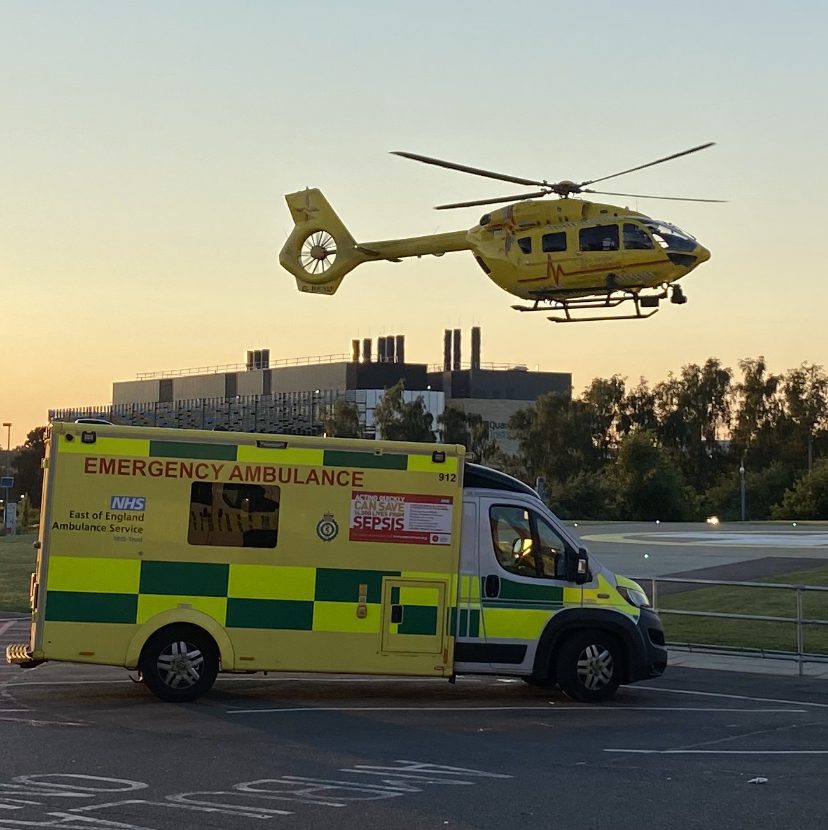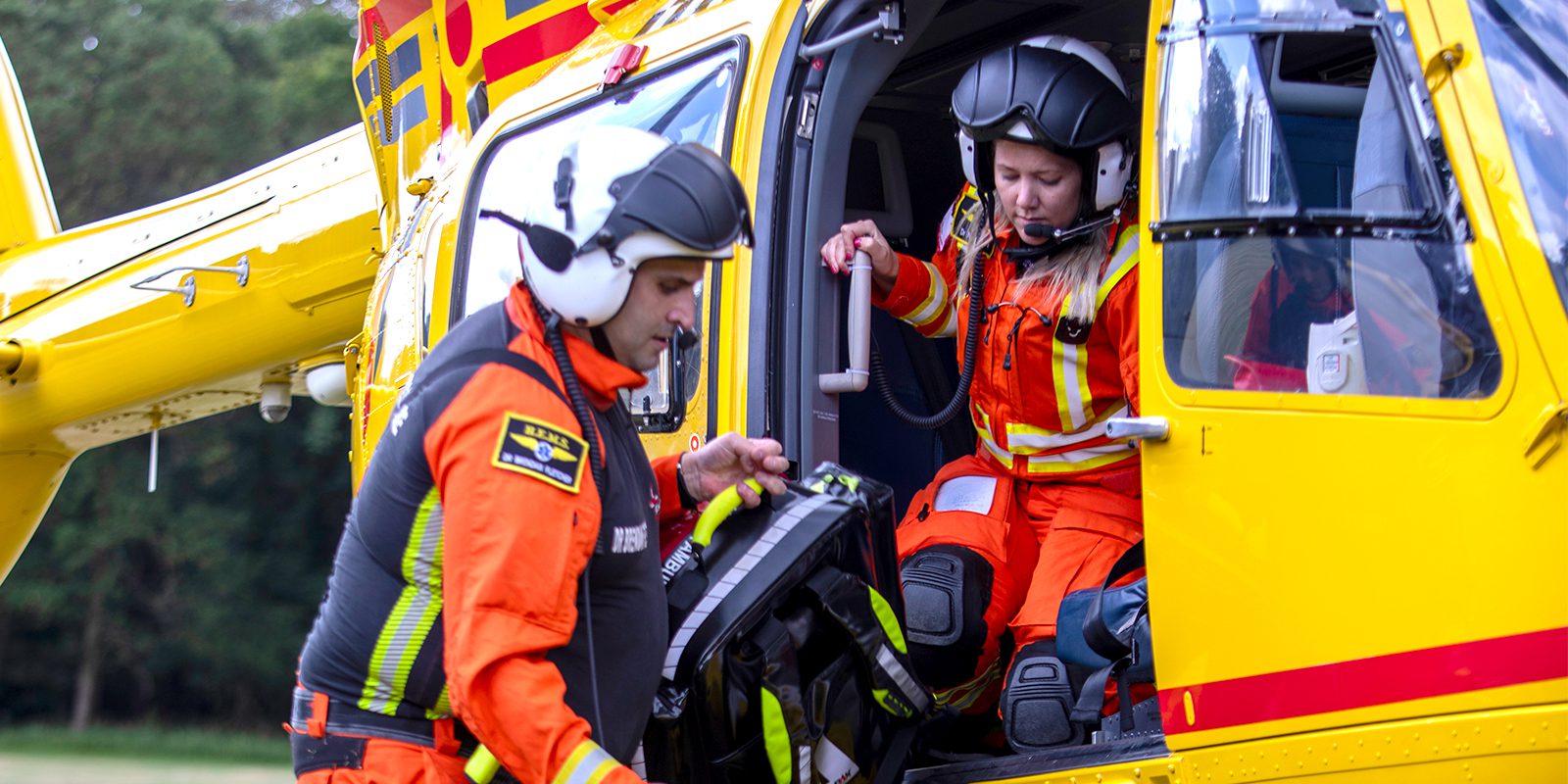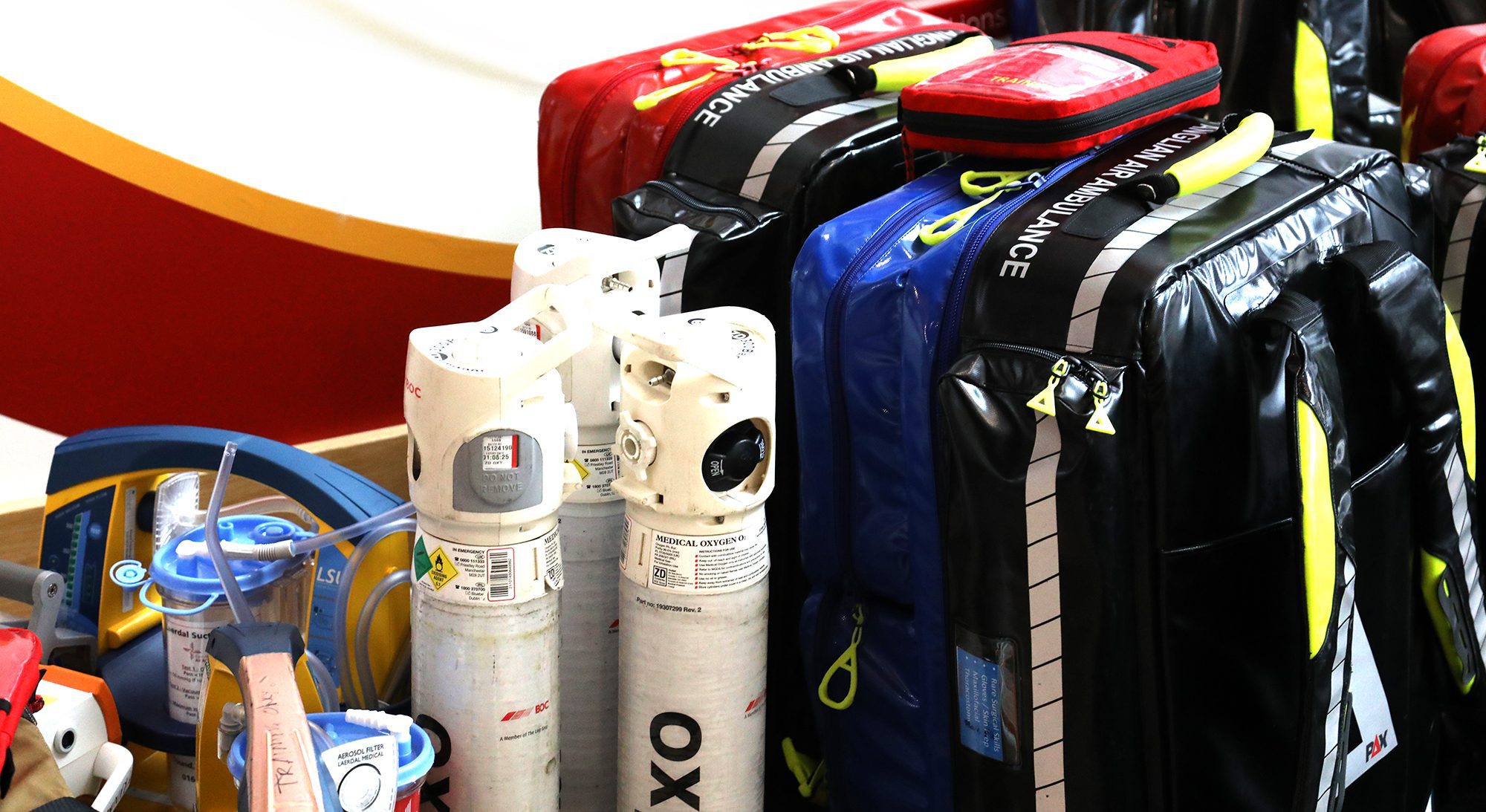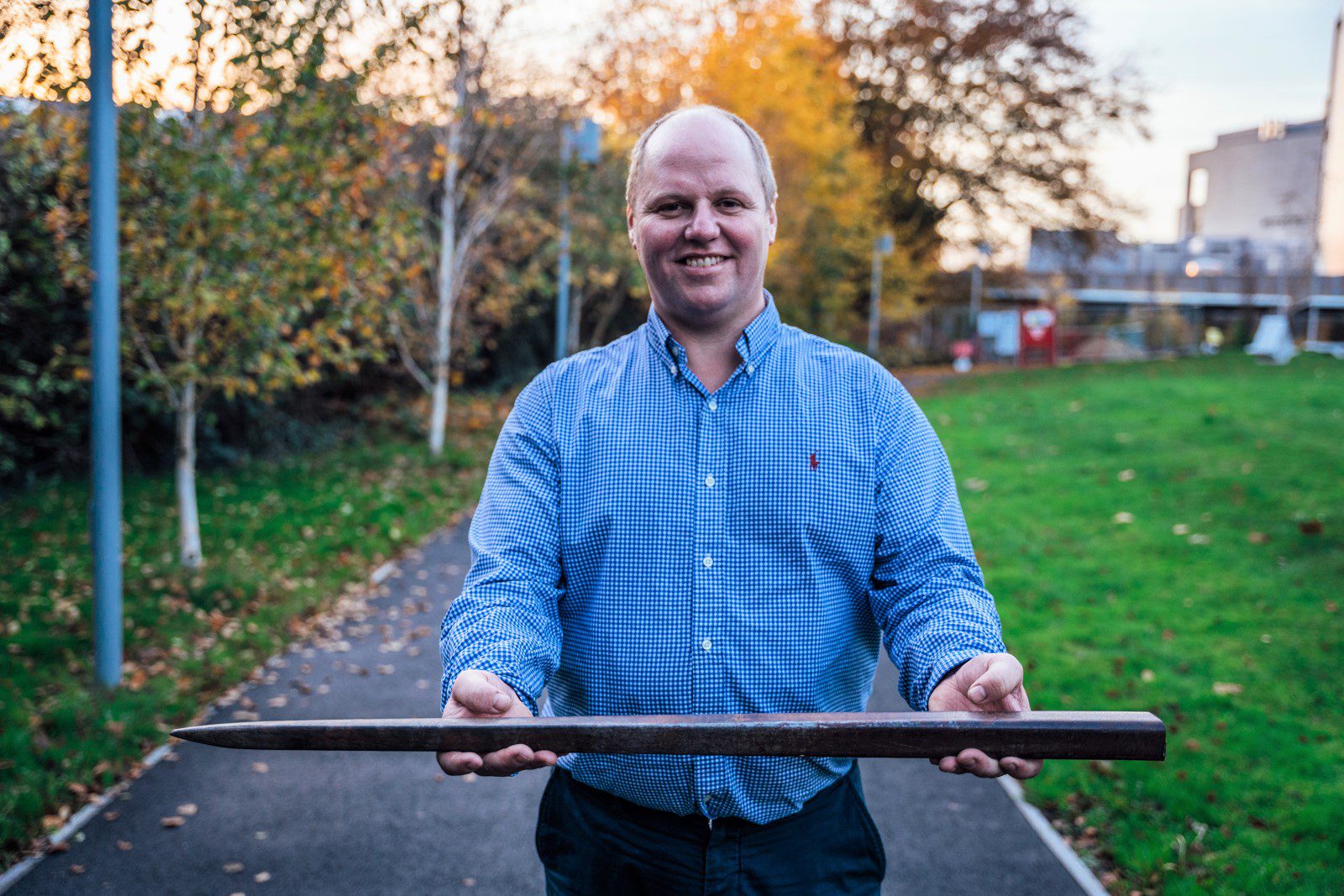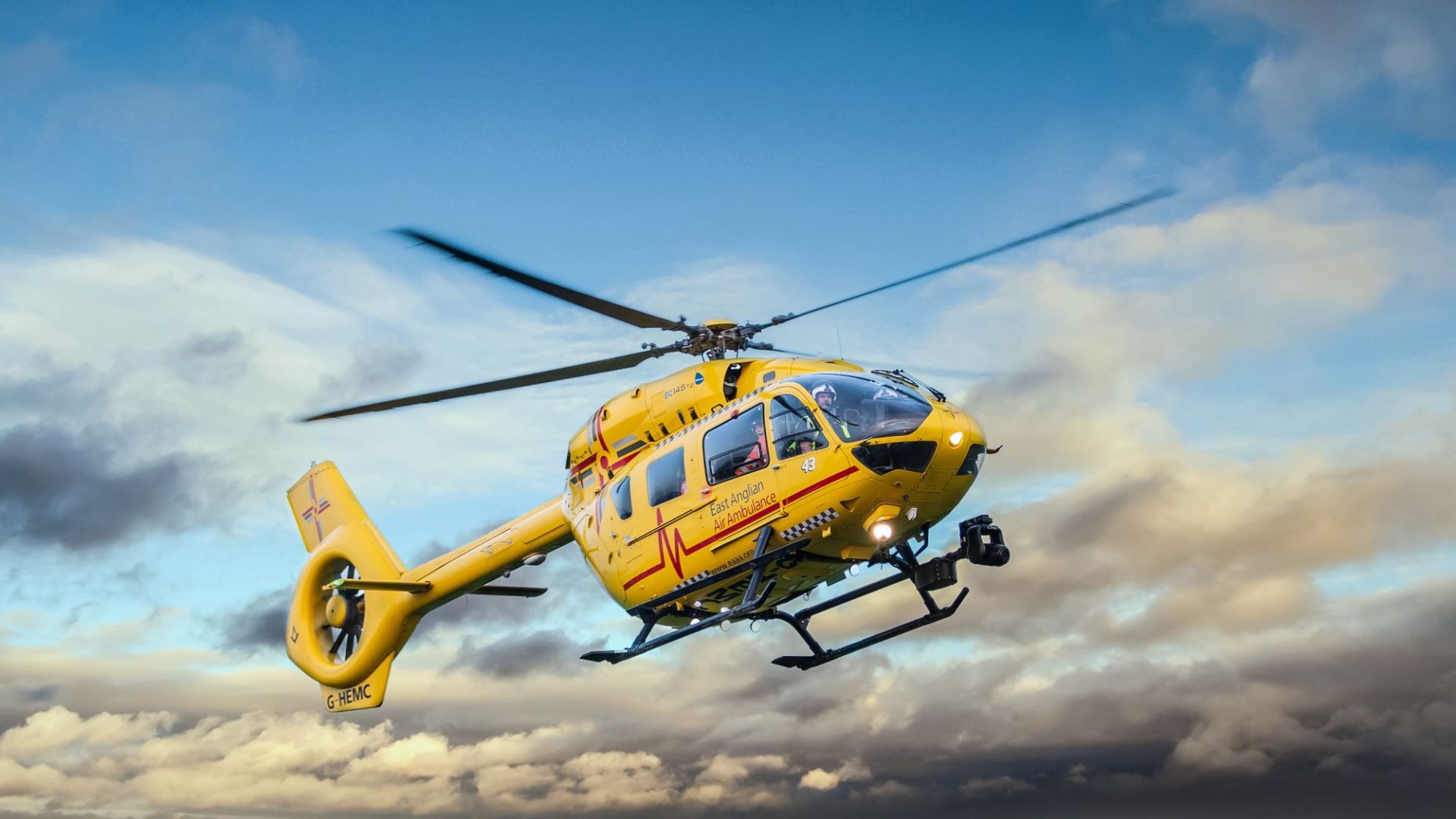Hospitals and helipads
When attending a patient, the crew will choose the most appropriate destination hospital with the right specialism(s) for the patient’s onward care. We work closely and collaboratively with our regional hospitals to give each person the best possible chance of surviving and recovering from a life-threatening emergency.
The crew can transfer patients by air, or they may accompany patients by land ambulance if it is quicker, safer and more appropriate to do so, depending on the patient’s needs and location.
The hospitals we most commonly transfer patients to are:
- Cambridge University Hospital, Addenbrooke’s – our region’s Major Trauma Centre (MTC)
- Norfolk and Norwich University Hospital – specialist cardiac services
- Ipswich Hospital
- James Paget University Hospital, Gorleston
- West Suffolk Hospital
- Cambridge University Hospital, Royal Papworth – cardiac and lung specialisms
- Queen Elizabeth Hospital, King’s Lynn
- Lister Hospital, Stevenage
- Bedford Hospital
- Broomfield Hospital, Chelmsford – burns and plastics specialism
- Peterborough City Hospital
We will attend patients outside of our core counties of operation (Bedfordshire, Cambridgeshire, Norfolk and Suffolk) on occasion. For example, if other air ambulances have already been tasked, or when transferring a patient to the most appropriate hospital, such as the nearest Major Trauma Centre, or a specialist hospital.
On average, we transfer by air or accompany by road ambulance two patients every day to the Norfolk and Norwich University Hospital, and one patient each day to Cambridge University Hospitals for onward treatment.
The crew may also provide critical care at the scene of the incident, with our colleagues from the ambulance service then transferring the patient by land ambulance to the destination hospital. We call this a scene assist.
When transferring a patient by air, being able to land as close as possible to the hospital is critical
Last year, 64% of EAAA taskings were by helicopter, 183 patients were transferred by air to hospital, therefore the region’s helipads are an essential part of the infrastructure when it comes to saving lives.
The region’s hospitals, as helipads providers, are key to delivering an effective and efficient air ambulance service in East Anglia, giving patients the very best chance of survival or good outcomes following an accident or medical emergency.
A network of fully operational 24/7 lit helipads, means that East Anglian Air Ambulance (EAAA) becomes much more effective, particularly in the dark. Journey times to hospital decrease and EAAA crews can take patients to the specialist hospitals most appropriate for their treatment needs whatever time of day or night.
We – and more importantly our patients and their families – need 24/7 lit helipads at hospitals. Through a collaborative approach with regional hospitals and our neighbouring air ambulances in the East of England, we can develop a regional helipad infrastructure which will benefit our communities and patients for decades to come.
